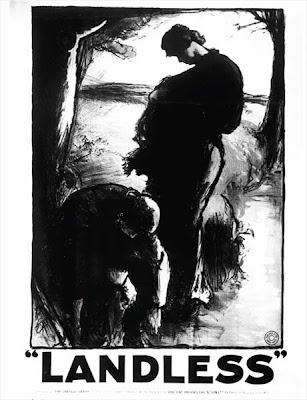 Inspired by paintings (some from Brittany), these photos are from an ongoing collaboration with Toby Everett. This first group was shot in the fall of 2010, some by us, others by Miah Nate Johnson, one November afternoon, in Wellfleet.
Inspired by paintings (some from Brittany), these photos are from an ongoing collaboration with Toby Everett. This first group was shot in the fall of 2010, some by us, others by Miah Nate Johnson, one November afternoon, in Wellfleet.
This first group was shot in the Herring River on both sides of High Toss bridge.
To prepare, we assembled a group of images, culled from 19th century art and illustration and WPA posters and photography. Images of "vagabonds" and people on the move-- on roads, clutching their possessions, looking for work, hoping for a chance, landless, homeless. Thinking about the relevance for these images in times of economic crisis and escalating prices of land, how could we reference these images in our own landscape?
We gathered up some of our own clothing-- mostly wool-- and some evocative objects.
  |
Jules-Alexis Muenier, Vagabonds (Les Chemineaux) 1896, Palais Bourbon, Paris |
 |
| Landless, Labour Party poster, 1919 |
 |
| Hubert von Herkomer, Hard Times, 1885 |
With his street photographer's sensibility, Miah saw more in the old white pitcher, producing two of our favorite images:

Corot's Woman at the Well comes to mind.
 |
| Corot, Young Woman at the Well, 1870 |
There is a field near the bridge that I have always been drawn to. When I was a child, in the early 1970s, there was a short-lived communal garden there, but I believe that it failed-- perhaps too much salt in the soil. The field has remained relatively open since then, a wasteland of grass hummocks and puddles, with thorny blackberry canes here and there.
We thought of setting this wayward couple out in the field with a few of their possessions, as if they were camping, squatting or resting in this forgotten place. Setting the almost faceless figures in the middle distance, under those wintry trees was, again, a choice that imitated the poses that Corot and many Barbizon painters favored.
In this field, I was also thinking of naturalist images (and Soviet Socialist Realist posters based on these prototypes of heroic peasant figures) set in open fields, like Jules Breton's iconic Song of the Lark (beloved in the US-- reproductions hung in countless parlors).
 |
| Jules Adolphe Breton, The Song of the Lark1884. Art Institute of Chicago |
And the scythe inevitably recalled images of death, the reaper:
 |
| Jean-François Millet, Death and the Woodcutter (La Mort et le bûcheron). Date: 1858-59 |




















No comments:
Post a Comment